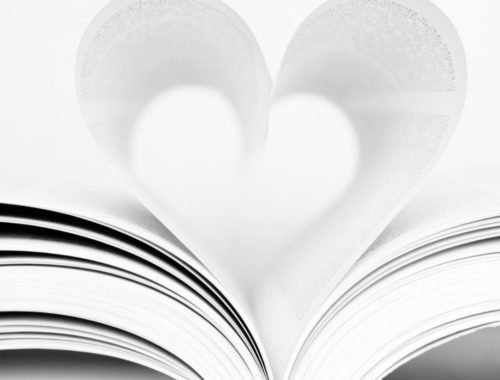
10 Books that have Changed the World
This is a collaboration post with Ink for Thought
Books have the incredible power to teach us, share new ideas and perspectives with us as well as challenge our preconceived ideas on particular topics.
There are so many books out there that have simply changed our world in more ways than one.
Below is a list of 10 books (5 on my post and 5 on the Ink for Thought blog – link below).
I would love to hear in the comments what books you think have changed the world and why.
..
Anne Frank: The Diary of a Young Girl by Anne Frank

“What is done cannot be undone, but one can prevent it happening again.”
Synopsis: In 1942, with the Nazis occupying Holland, a thirteen-year-old Jewish girl and her family fled their home in Amsterdam and went into hiding. For the next two years, until their whereabouts were betrayed to the Gestapo, the Franks and another family lived cloistered in the “Secret Annexe” of an old office building. Cut off from the outside world, they faced hunger, boredom, the constant cruelties of living in confined quarters, and the ever-present threat of discovery and death. In her diary Anne Frank recorded vivid impressions of her experiences during this period. By turns thoughtful, moving, and surprisingly humorous, her account offers a fascinating commentary on human courage and frailty and a compelling self-portrait of a sensitive and spirited young woman whose promise was tragically cut short.
How did it change the world: Anne Frank: The Diary of a Young Girl is an incredible record of WWII from the perspective of a young German-Jewish teenager forced to go into hiding with her family in the attic space above her father’s office building. The diary was published after she died during the war (she was captured and sent to a concentration camp) and it plays a very significant role in remembering the Holocaust. Yet her message of hope and courage has inspired generations. It has been translated into 67 languages and over 30 million copies have been sold.
“In spite of everything, I still believe that people are really good at heart.”
..
Harry Potter and the Sorcerer’s Stone, by J.K. Rowling

Synopsis: Harry Potter’s life is miserable. His parents are dead and he’s stuck with his heartless relatives, who force him to live in a tiny closet under the stairs. But his fortune changes when he receives a letter that tells him the truth about himself: he’s a wizard. A mysterious visitor rescues him from his relatives and takes him to his new home, Hogwarts School of Witchcraft and Wizardry.
After a lifetime of bottling up his magical powers, Harry finally feels like a normal kid. But even within the Wizarding community, he is special. He is the boy who lived: the only person to have ever survived a killing curse inflicted by the evil Lord Voldemort, who launched a brutal takeover of the Wizarding world, only to vanish after failing to kill Harry.
There is a dangerous secret object hidden within the castle walls, and Harry believes it’s his responsibility to prevent it from falling into evil hands. But doing so will bring him into contact with forces more terrifying than he ever could have imagined.
How did it change the world: Whether you love the series or hate it, one thing is certain – Harry Potter has changed the world in more ways than one. It has significantly increased young readers. It has also completely removed the divisions between children, young-adult and adult reading categories. The book became so irresistible to all ages as well as other authors out there. The amount of fan fiction and inspiration drawn from the Harry Potter series resulted in a huge increase in children’s literature. It has made fantasy books popular again with magic-based books becoming very dominant in children’s literature. After Harry Potter’s success the children and young-adult fantasy genre exploded.
.
Frankenstein, by Mary Shelley

Synopsis: Frankenstein tells the story of gifted scientist Victor Frankenstein who succeeds in giving life to a being of his own creation. However, this is not the perfect specimen he imagines that it will be, but rather a hideous creature who is rejected by Victor and mankind in general. The Monster seeks its revenge through murder and terror.
How it changed the world: Frankenstein would have to be, arguably, the first true science fiction novel. In 1815 the eruption of the Mount Tambora volcano in Indonesia resulted in strange weather being reported from across the globe (constant cloud cover, red snow in Italy, constant rain lasting months). In 1816 which was known as the year without a summer, year Mary travelled with a group of friends to Switzerland for a summer break and were stuck indoors due to never ending rain discussing various scientific theories about life and death. After those discussion, one of the friends, Lord Byron, suggested they each write a horror story. This is how Mary created the story of Frankenstein.
The issues discussed in the book regarding tampering with life and death and ‘playing God’ are still very current and is one of the reasons Frankenstein still resonates with millions of readers today. It introduces the concept of scientific responsibility and questions the limits of how far to push with scientific developments and what will the implications be.
…
Catch-22, by Joseph Heller

Synopsis: The novel is set during World War II, from 1942 to 1944. It mainly follows the life of Captain John Yossarian, a U.S. Army Air Forces B-25 bombardier. Most of the events in the book occur while the fictional 256th Squadron is based on the island of Pianosa, in the Mediterranean Sea, west of Italy. The novel looks into the experiences of Yossarian and the other airmen in the camp, who attempt to maintain their sanity while fulfilling their service requirements so that they may return home.
How It Changed Novels: Catch-22 redefined the definition of novel. There are comedy and drama elements in it, as well as mystery. It clearly demonstrated that novels didn’t have to be pigeonholed into only one category. This changed the way many writers approached to their novels with more and more books crossing genres.
…
A Clockwork Orange, by Anthony Burgess

Synopsis: In Anthony Burgess’s influential nightmare vision of the future, criminals take over after dark. Teen gang leader Alex narrates in fantastically inventive slang that echoes the violent intensity of youth rebelling against society. Dazzling and transgressive, A Clockwork Orange is a frightening fable about good and evil and the meaning of human freedom. This edition includes the controversial last chapter not published in the first edition, and Burgess’s introduction, “A Clockwork Orange Resucked.”
How It Changed Novels: A Clockwork Orange examines the behaviour of an individual and the huge impacts it can have on a society. The violence in A Clockwork Orange is unlike anything previously published in the world of fiction. Interestingly, the final chapter of the book was omitted when it came to publishing the book in America which meant the message of the book was completely misunderstood. As a result, this book became the ‘poster novel’ against so called publisher meddling.
READ THE OTHER HALF OF THE POST ON THE INK FOR THOUGHT BLOG HERE

30 of the best book quotes
You May Also Like

15 VERY EXCITING BOOK RELEASES SEPTEMBER 2020
15/08/2020
How to get your reading mojo back
11/08/2020